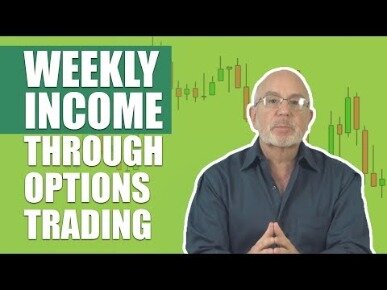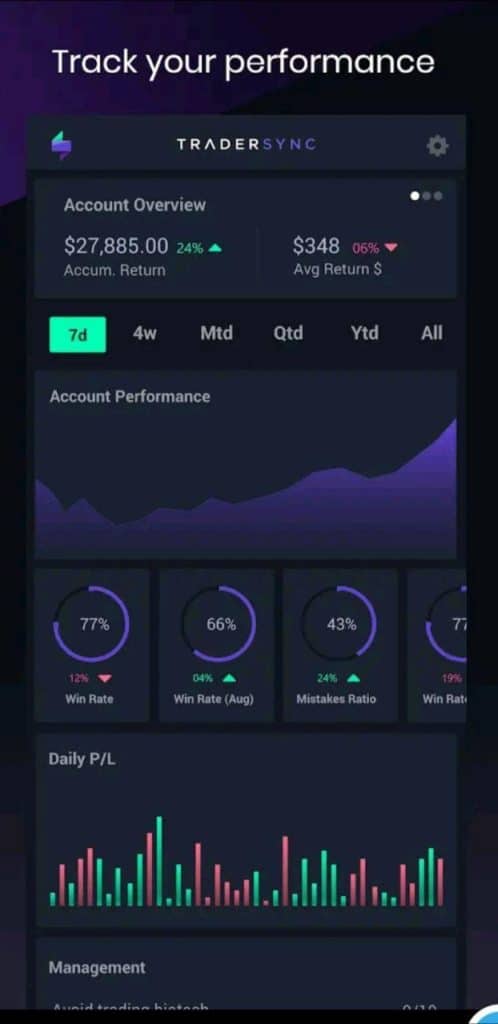Contents:


Click here for a full list of our partners and an in-depth explanation on how we get paid. The Database of WikiFX comes from the official regulatory authorities , such as the FCA, ASIC, etc. The published content is also based on fairness, objectivity and fact. WikiFX doesn’t ask for PR fees, advertising fees, ranking fees, data cleaning fees and other illogical fees.
Simulated trading programs, in general, are also subject to the fact that they are designed with the benefit of hindsight. No representation is being made that any account will or is likely to achieve profit or losses similar to those shown. When it comes to forex trading, drawdown refers to the difference between a high point in the balance of your trading account and the next low point of your account’s balance. The difference in your balance reflects lost capital due to losing trades. As for the investment process, drawdown is the difference between your portfolio’s maximum and the minimum.
Forex Trading Scams – How To Spot and Avoid Scams – publicfinanceinternational.org
Forex Trading Scams – How To Spot and Avoid Scams.
Posted: Thu, 22 Dec 2022 08:00:00 GMT [source]
Without a defined process in place for how you will handle drawdowns, your emotions are free to run wild. Instead of lowering risk after a loss or two, you’ll be tempted to make back what was lost by increasing leverage. It’s a necessary business expense that must be endured in order to find profitable trade ideas. These traders increase their risk from 2% to 4% in a desperate attempt to recover lost funds. It’s imperative that you have a defined process in place to control drawdowns.
How to Draw Trend Lines Perfectly Every Time
Think of this as the disaster prevention plan for your trading business. Simply put, drawdown is the reduction of one’s trading capital measured from peak to trough. You can also keep the markets in your crosshairs by using some of the top forex trading apps that can keep you plugged in and trading as economic or political news hits. After all, cloud technology is expected to account for the bulk of forex trading by 2025. Overly leveraging your trades can greatly increase your losses.
Update it to the latest version or try another one for a safer, more comfortable and productive trading experience. In a nutshell, here are the three main points of drawdowns. The week is not particularly report-heavy, so investors will be able to focus on the new components of the pricing environment and the details of business activity. It is up to you to decide whether compensating for the loss is worth the risk.
Typically, drawdown risk is mitigated by having a well-diversified portfolio and knowing the length of the recovery window. Drawdowns present a significant risk to investors when considering the uptick in share price needed to overcome a drawdown. For example, it may not seem like much if a stock loses 1%, as it only needs an increase of 1.01% to recover to its previous peak. However, a drawdown of 20% requires a 25% return to reach the old peak. A 50% drawdown, seen during the 2008 to 2009 Great Recession, requires a whopping 100% increase to recover the former peak.
Three simple rules for restoring an account after a drawdown
16% – 30% – no panicking yet, but time has come to decrease risks and the intensity of trading. The market situation and dynamics, as well as the state of your trading instrument, are to be revised. Which simply means that you can have more losing trades that winning trades but you will still come out on the top. Now, if every trade, you risk around 42 pips, this win would have wiped out 6 losing trades….Just one trade! You start losing…and if your trading loses start to get bigger and you are suffering a big drawdown, you do not make sense of it and do not realize it for what it it.
List of the Richest Forex Traders – publicfinanceinternational.org
List of the Richest Forex Traders.
Posted: Mon, 30 Jan 2023 08:00:00 GMT [source]
The risk/reward ratio is used by many investors to compare the expected returns of an investment with the amount of risk undertaken to capture these returns. Portfolio management involves selecting and overseeing a group of investments that meet a client’s long-term financial objectives and risk tolerance. Stock price drawdowns or market drawdowns should not be confused with a retirement drawdown, which refers to how retirees withdraw funds from their pension or retirement accounts. They measure how much a trading account is down from its peak before it recovers again back to the peak. Some traders like to split their metrics into specific periods.
Before I get to a point where my account is destroyed, I want to stop trading and reassess. For example, if my account is down 30% from its peak value, I will stop trading and examine my method and execution. Let’s say I took my account balance from $10,000 to $20,000.
Types of drawdowns and how they affect your trading
Also, if needed, you can use a demo account from your forex broker for several days, and get back to forex trading in the real live market when you get your confidence back. Every investor should know how to assess drawdowns to effectively mitigate the risks it poses. Depending on the asset class you are trading, drawdown risk is curbed by assessing the diversification of a portfolio as well as the effort required to overcome it. A stock trader, for instance, will want to mitigate drawdown risk by diversifying his portfolio across different industries. A cryptocurrency trader will mitigate drawdown risk by balancing between established coins, Stablecoins and altcoins. A forex trader will want to curb drawdown risk by assessing risk exposure to major, minor and exotic currency pairs.
However, what creates these periods also allows traders to get out of bad trades faster than ever before. As volatility increases, so does the risk for better trade opportunities. Many traders place a lot of importance on the maximum drawdown figure. Even if your objectives are to produce returns with a long-term bias, the short-term performance volatility matters, especially when there are adverse market conditions. This issue is most pertinent when you compare the portfolio you are evaluating to a broader index. When you are trading currencies, you can use an index such as the dollar index as a base for comparison.

The bottom line is that your goal is to come up with risk management tools and a trading system that will enable you to survive these periods of bigger losses. The measures can be as drastic as changing an entire strategy or as practical as reducing the stake amount, tightening stop losses or avoiding volatile assets. For instance, consider a forex trader that has set a maximum drawdown of 20%. If the drawdown surpasses 15%, the trader can decide to reduce the lot size traded, or even avoid assets that are considered risky, such as leveraged ETFs and exotic currency pairs. Beyond investing, drawdown can be applied even in the banking world when dealing with credit. For instance, if you qualify for a mortgage of up to $100,000, you could decide to use the entire line of credit or just a portion of it.
What You Can Learn From a Drawdown
Let’s say you’re willing to put up 1% of your money on the line with every trade. A monthly decline of 5% could be used as a stop-loss level to prevent further trading losses. The potential for a trading account to experience a drawdown is proportionate to its exposure to risk. Absolute drawdown is the percentage drop from the initial deposit to the lowest position below the initial deposit during the test period.

This entirely depends on individual risk tolerance or personality type. An aggressive trader can tolerate a higher-level drawdown, whereas a conservative investor will tolerate a lower level of drawdown. However, it is always recommended for investors and traders that drawdown should be kept below the 20% level. By setting a 20% maximum drawdown level, investors can trade with peace of mind and always make meaningful decisions in the market that will, in the long run, protect their capital.
Take one deal at a time and limit your risk to 2% per trade, and even if things go horribly wrong, you’ll still just be down 2%. You can limit your foreign exchange trading to just your preferred currency pair if you already know its relative value. Beyond that, you should take into consideration that trading is a tough business. The key to managing a drawdown is to have a risk management plan that allows you to survive adverse market conditions.
When a trader loses, their money is taken out of their trading account. Extremely improbable that there won’t be any further losses in the future. Drawdown is the term used to describe the process of losing money while playing a game.

In the example below you will see the USD/JPY monthly chart. You could theoretically calculate the maximum drawdown on this forex pair, once the currency pair hits a fresh new peak in 2015. In this situation, we can open 2 locking trades with the same volumes as before or 1 trade sized 0.6 lot. If we just close the losing trades, the drawdown will be $450, however, the psychological pressure will not let us do so. An inexperienced speculator turns to a more experienced one for help.
This will help you keep your portfolio out of a downward spiral. When your losses stop, you can return your risk per trade to your usual level and start building it back up. Hopefully, you will never experience a losing streak of this magnitude, but every trader does experience a series of losses at some point. You want to make sure that your portfolio can survive downturns and bad luck. But don’t give up on forex trading just yet—a drawdown can still be part of a profitable trade in the long run. You just need to figure out whether you can withstand the drawdown and whether you believe your pair will become profitable again.
Diversifying a https://forex-world.net/ across different asset classes can also help in mitigating drawdown risk. For example, if the maximum risk per trade is 2%, the stop-loss size in dollar terms cannot exceed 2% of the entire account value. If my account balance is $10,000, a trade cannot cost me more than $200 if I get stopped out. That means I need to calculate the position size for each trade if my stop loss size and Forex pairs are different for individual trades. For example, an EUR/USD trade with a 50-pip stop loss will have a different position size than a GBP/USD trade with a 100-pip stop-loss.
Investopedia requires writers to use primary sources to support their work. These include white papers, government data, original reporting, and interviews with industry experts. We also reference original research from other reputable publishers where appropriate. You can learn more about the standards we follow in producing accurate, unbiased content in oureditorial policy. The price rises to $110 but then swiftly falls to $80 and then climbs back above $110. The time it takes to recover a drawdown should also be considered when assessing drawdowns.
Measuring drawdowns allows you to take preventative steps to prevent severe damage before it occurs. Measuring drawdowns can also help you act more strategically rather than emotionally, which can help prevent problems. At any point, if my account value is less than its previous historical highest value, I’m technically in a state of drawdown.
- If you have a drawdown, you’ll should adjust your strategy and work it patiently to recoup your losses.
- When trading the forex market, we forex traders are always looking for an EDGE.
- In a Nutshell, this number indicates the maximum amount of money you can lose in relation to your initial deposit.
- Here, we highlight that the trades we are talking about are still open.
They will most likely become emotional, using leverage and over-trading to get their trading account back to where it was. Many investors or fund managers on Wall Street are ecstatic if they average 20% profit for the year. No matter what system you use, you will eventually have a losing streak.
Whatever you choose, just make sure to stay away from your charts. When faced with a Drawdown forex situation, most traders feel the need to try harder. They want to make back what they just lost as fast as possible. That means if you lose 5% or more of account equity, you have to stop trading until the next month begins. If you trade Forex long enough, you will experience a losing streak.
To calculate your relative drawdown, divide your maximum drawdown by its maximum peak, and then multiply by one hundred. After a bad trade or a losing streak, your equity drops down to $40,000. You could also refer to it as a 20% drawdown, because $10,000 is 20% of $50,000.
You can also calculate the maximum drawdown per a period, but many times this is just referred to as the monthly or quarterly drawdown. Let us imagine we are trading the EUR/USD pair, the deposit size is $3,000. Both were sized 0.3 lot, the loss in the first case was $300, while in the second case it was $150.



